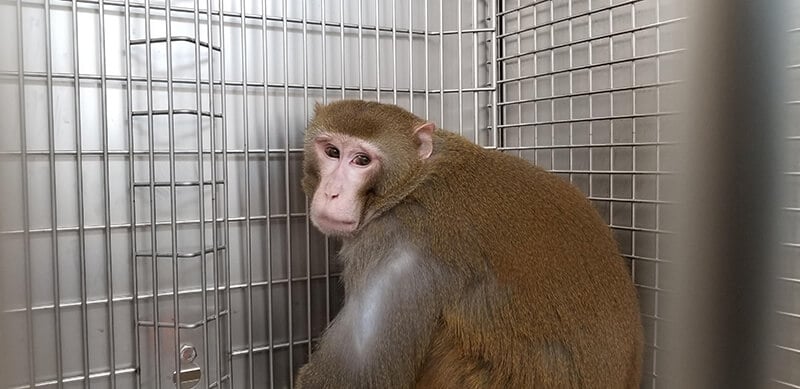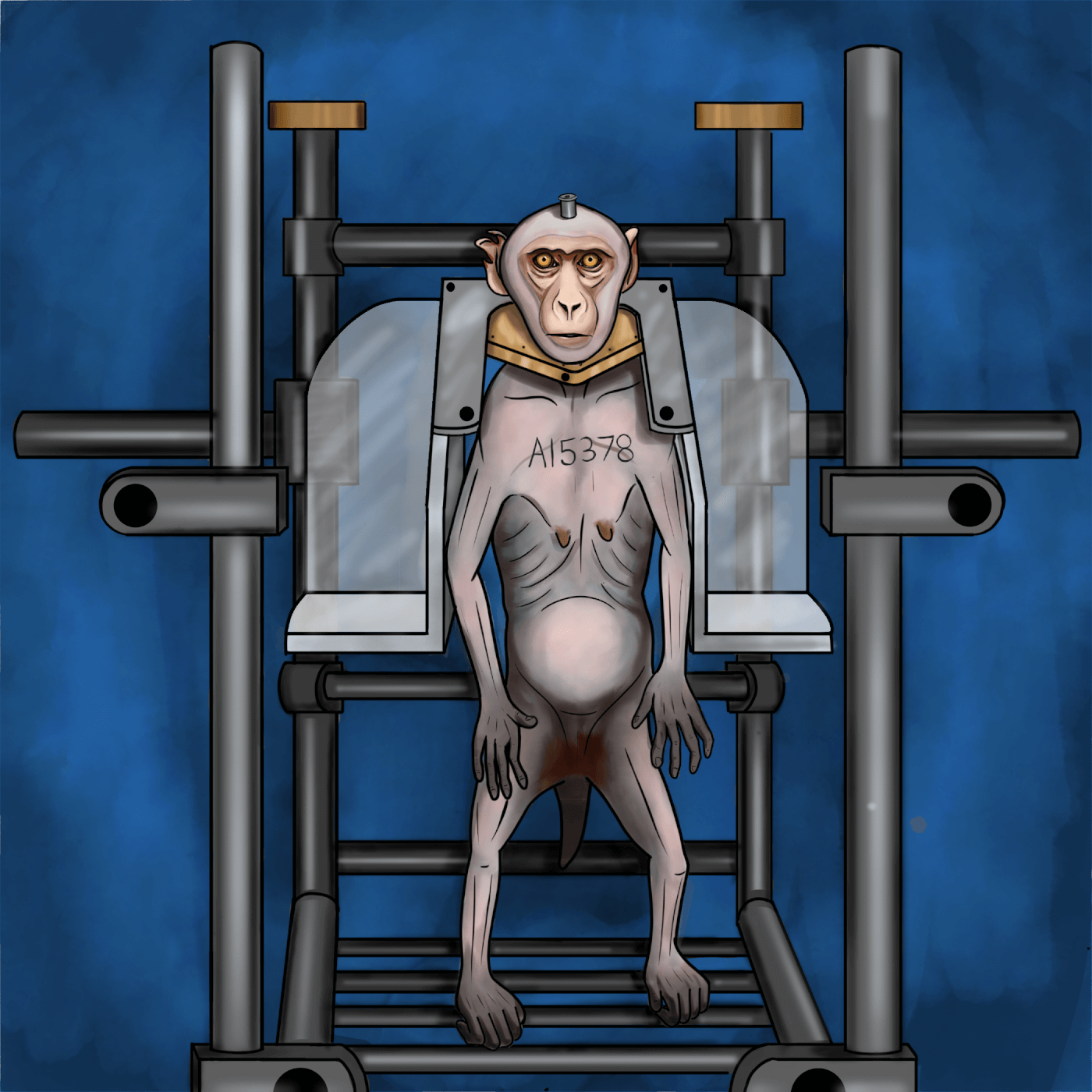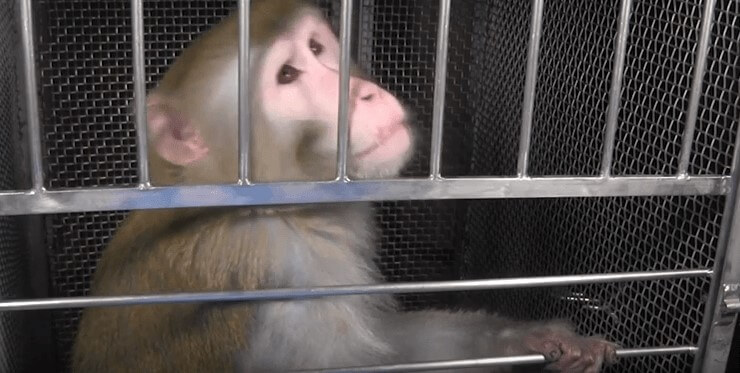Play PETA’s New Game, ‘Bad Logic Bingo,’ B-4 You Trust an Animal Experimenter
B-4 … B-10 … BS! That’s what primate experimenters are spouting every time they open their mouths to defend maiming, traumatizing, and killing primates in laboratories—and then in the next breath, they contradict themselves. Their excuses are so predictable that we’re slapping them onto a bingo card and betting we’ll get five squares in a row in no time.
Click the squares on the bingo card below to learn more about primate experimenters’ favorite arguments and why they’re bogus.
Why do experimenters keep tossing out the same transparently false excuses for their behavior as readily as a bingo machine spits out balls? Because it wins them congratulations from other experimenters desperate to stay in business—and a whole lot of your taxpayer dollars. The National Institutes of Health (NIH) shells out some $20 billion annually to animal experimenters to fund their twisted tests.
Monkeys always lose when experimenters play with their lives, and that’s what’s happening right now to more than 109,000 of them in the U.S. alone. Imprisoned in cramped, fluorescent-lit cages, they’re so frustrated that they bite their own flesh, spin in endless circles, and rip out their own hair.
Here are just a few of the monkeys who have suffered while experimenters played games with their lives:
- Cornelius has been imprisoned at the Wisconsin National Primate Research Center for over a decade. Like most monkeys born in laboratories, he was taken from his mother when he was just an infant and given an inanimate surrogate—perhaps a piece of fleece wrapped around a block of wood—to cling to for comfort. On multiple occasions, he’s been strapped into a restraint chair where his penis was painfully electroshocked until he ejaculated so that his sperm could be used to breed more monkeys for cruel experiments. PETA’s undercover investigator observed that he sat hunched over or with his face pressed against the cage bars, apparently having lost his will to live.

- Dorothy, an elderly mother, was locked into a restraint chair for hours at a time at the Washington National Primate Research Center and offered a bite of food or a dribble of water only when she correctly performed certain memory tasks. In the months before her death, her weight plummeted. Distraught, she plucked almost all the hair from her frail, withered body. When she was finally killed, experimenters discovered that her liver was failing and that she was suffering from cancer.

- Beamish has been held in solitary confinement in experimenter Elisabeth Murray’s laboratory at NIH for the past 12 years. Experimenters injected toxic chemicals into his brain to inflict permanent damage, then thrust him into an inescapable metal box and terrified him with lifelike rubber snakes and spiders. On numerous occasions, staff have seen him circling in his cage or rocking back and forth—indications of severe mental distress. But rather than ending Beamish’s torment, experimenters respond to his misery by occasionally offering him a few peanuts or a slice of apple—which they absurdly call “enrichment.”

Experiments on Dorothy, Beamish, and thousands of other monkeys haven’t resulted in the promised cures and treatments for humans. They haven’t ended the decades-long search for an AIDS vaccine, unlocked the secret to curing cancer, or defeated patients’ battles with mental illness. They’ve reliably produced only one thing: unfathomable misery.
It doesn’t have to be this way. While experimenters offer up flimsy excuses for violence more quickly than ink dabbers hit bingo cards during the speed round, real scientists have left the bingo hall and are modernizing biomedical research by embracing cutting-edge, human-relevant technology. Urge Murray, Beamish’s tormentor, to join them:

